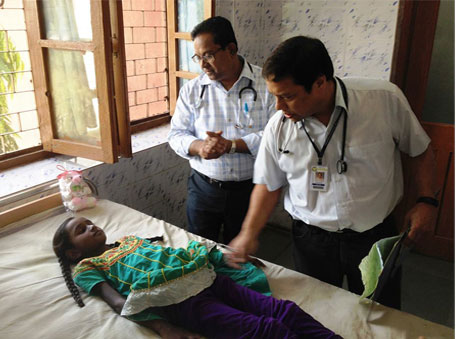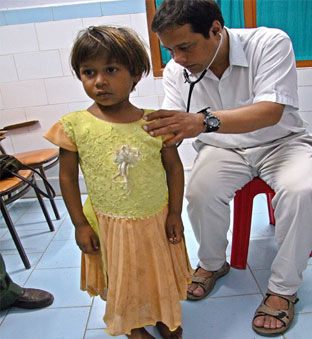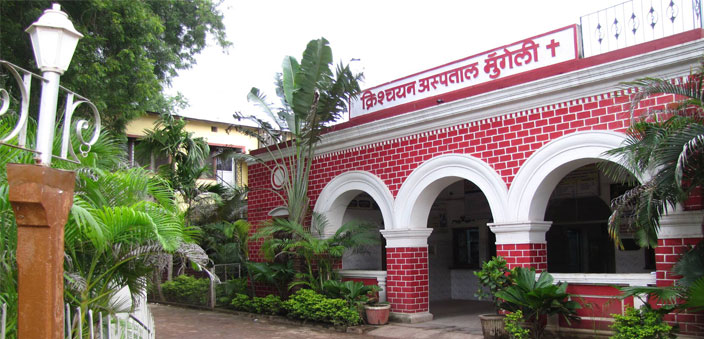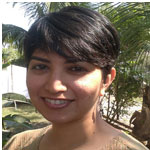Twenty-year-old Shakti (her name means ‘strength’ in Hindi), pregnant and Hepatitis-B positive was rushed to the hospital when she was bitten by a viper, needing anti-venom and ICU (Intensive Care Unit). Nineteen-year-old Asha (her name means ‘hope’ in Hindi) was in her ninth month of pregnancy and had been fainting frequently. Only when she fell and cut her lip did her in-laws bring her to CHM (Christian Hospital, Mungeli), where we diagnosed her with eclampsia requiring an immediate C-section and care in the ICU; Asha was saved, but unfortunately her baby died due to the lack of prenatal care. Sixty-year-old Jyoti (her name means ‘light’ in Hindi) awaits eye surgery after two decades of living in darkness as the cataracts in her eyes progressed. Each one of these women illustrates the plight of a host of others in Chhattisgarh who suffer the ravages of extreme poverty, and who come to Christian Hospital, Mungeli, seeking life-saving medical care.
The goal of CHM
CHM is located in the small town of Mungeli in Chhattisgarh. Chhattisgarh has a population of 25 million. On land that is 44 percent forested, one-third of the population is tribal, and about 40 percent come from educationally marginalised communities (SC, OBC). Depending on whose measure of poverty you choose to believe, nearly half the total population lives on less than $1.5 a day (ie., Below the Poverty Line). Chhattisgarh is one of eight Indian states whose poverty exceeds that of 26 of the poorest African countries. Eighty percent of the population lives in rural areas, 80 percent of households do not have a toilet, and only half of rural women are literate. For cultural and economic reasons, many rural residents often fail to seek medical care until their condition is critical, instead first consulting traditional healers and unqualified, unlicensed village medical practitioners.
In this challenging context, our mission is to provide low cost, modern health care and education through skilled and compassionate personnel, without discrimination, to those marginalised by poverty. CHM is a 120-bed rural secondary care hospital with 11 doctors in the fields of General Surgery, Anesthesia, OBGYN, Orthopedics, Physiotherapy, Dental, and visiting eye surgeons. Together with 42 nurses, we annually deliver over 700 babies, perform 2,500 surgeries in three operating theatres, run two ICUs, treat 30,000 outpatients, and conduct 48,000 lab tests. We also run a nursing school (General Nursing and Midwifery) for 60 rural Chhattisgarh girls, an English medium school for 900 village children and a community college for 8th grade drop outs. We believe that education is the one thing that can break the cycle of poverty and lead young people on a path of independent thought.
At CHM we address the impacts of extreme poverty by providing acute intensive medical care to patients suffering from attempted suicides (mostly farmers and young women), dowry related burnings of women, snake and scorpion bites, delayed (or denied) treatment for infections such as TB, HIV, Hepatitis, often coupled and complicated by pregnancy. We provide acute surgical care for high infection OBGYN issues, carcinomas and abdominal complications requiring general surgery, trauma victims requiring orthopedic surgery, and patients with curable blindness who need eye surgery. We are the only hospital in this frontier area offering high quality surgical, obstetric, neo-natal and intensive care. Our role as a charitable institution is to fill the gap in public health provision and increase the capacity of India’s health system. For a 80 km radius we offer the only blood bank, eye and dental services, physiotherapy, ICU facility, spiral CT scanner, 500mA X-ray, ultrasound machines with colour Doppler and cardiac echo, fully functioning lab and medical incinerator. We are soon to start dialysis treatment and a low cost cancer centre which will be the first of its kind in the state.

Dr. Samuel examine a patient
Here we cannot afford to forget Millennium Development Goals 4 and 5. Chhattisgarh has the country’s second highest maternal mortality, still birth and neo-natal mortality. Only 43 percent of rural women have received a full pre-natal check-up and 86 percent of deliveries take place in the home. The vast majority of mothers who come to our facility have received no prenatal care, have already laboured at home for hours or days, may have received care from an unqualified village practitioner, a traditional healer or the primary health centre that does not have the capacity to perform emergency obstetric procedures. When they finally make the decision to come to our hospital, it may already be too late for both mother and child. This coupled with high malnutrition, eclampsia, anaemia, cord prolapse, ruptured uterus and post-partum haemorrhage puts many mothers and babies at risk.
The ‘girl’ factor
For babies that do survive, they are of low birth weight (2 to 3lbs) and born to malnourished and anaemic young mothers who are neglected during pregnancy. Being born female is a health hazard; girl babies in central India are five-times more likely to die from pneumonia than boys, and in Chhattisgarh four times less likely to be immunised. These children perform poorly in school due to illness from micro-nutrient deficiencies, lack of immunisation and poor sanitation and hygiene. They eventually drop out of school or girls are pulled out of school for early marriage, and the entire cycle repeats itself potentially creating generations of sick and malnourished citizens. The biggest problems we see can be traced to poverty, illiteracy, the low status of women and girls, and the inequitable distribution of health and education facilities.
The social and cultural neglect of women and girls takes a toll on their health. A few months ago a 15-year-old girl was brought to the ICU with abscesses all over her body. She had been left in the village to die. When her parents finally brought her in, she was malnourished, weighing just 24 kg, had a haemoglobin of 7mg (it should be over 14mg), and needed 13 blood transfusions. We drained one litre of pus from her on just the first day and it took a team of four nurses, three hours to change all her dressings. This was nothing but a case of neglect.
We are driven by the philosophy that those who have the least must have access to the best medical and education services. It is imperative that we are supported in our efforts to provide sustainable, high quality, low cost health care to all. We are the only hospital in the district to be enrolled in the government’s national health insurance plan, Rashtriya Swasthya Bima Yojana, that provides free medical or surgical treatment for up to `30,000 per year for BPL families. We are also partners in the Mukhyamantri Seva Bima Yojna, a health-financing plan by the Chief Minister of Chhattisgarh for all people in the state. We have received support from USAID’s ASHA programme to fund a mobile maternal health clinic that will take health care to the most remote areas.
The CHM story
CHM has a long history. We are a 120-year old institution, started by American missionaries in 1896. It began as a dispensary but then grew to be a home for orphans whose parents died in famine, a boarding school for girls, a home for children of people with leprosy, and then grew to a bustling 120-bed eye hospital giving sight to the curable blind between 1924 and1948. After the 1970s when the income tax laws changed, the missionaries left India and the hospital went into decline. In 2003, Dr. Anil Henry, a general surgeon and his wife Teresa, an anesthetist, took over the hospital. Both had grown up in small rural mission hospitals in Orissa and Chhattisgarh and had done their medical training in CMC Vellore, Tamil Nadu. They were working in the United States for four years when they realised that they could be doing more good in India. They arrived from Nashville Tennessee during the monsoon, to a broken down hospital with four patients and two light bulbs, a troop of monkeys who had taken up residence in what used to be the surgical ICU, and a director’s bungalow with no roof, crawling with snakes and scorpions. Brick by brick they resurrected the hospital to once again become a beacon of hope, health care and education in this forgotten corner of the world.

Like most charitable institutions we struggle to develop a meaningful partnership with the local authorities. We also struggle with a lack of human resources and a lack of infrastructure. There are few people who would want to live and work in a remote area. There are even fewer local people who have a higher education and want to serve in the rural area. This is why our nursing school is vital to growing grassroots health workers and strengthening the rural health workforce. Many of our students come from challenging backgrounds. Some have worked in the fields, carried bricks on their heads and cleaned the homes of others to make ends meet. It is only after we started a school of nursing that young women have a higher education opportunity in the rural area. In just three years, they are more educated, healthy and highly skilled than people from their communities. We have graduated two batches of 20 nurses. We hope that with a steady stream of nurse graduates we can sustainably impact the health of local people. We also run a K-12 low cost English school for 916 village children. Seventy -six percent of the student body are from educationally marginalised communities. We have 27 teachers working tirelessly to educate children whose parents have never been to or completed school and never received an education in English. Last year we had to turn children away for lack of space. With very little support, we have completed the foundation, ground and first floor of a new three story school building so that we can give more children an education. We lack lab facilities, gym equipment and we always need more teachers, doctors, administrators, technicians, builders, public health researchers and volunteers.
We are a small friendly community that lives in a remote area. We have few facilities here, so we have old school fun; volleyball, badminton, singing, movie nights, picnics and just getting to know one another. We welcome all people to come and see what is possible, and to be a part of a community that wants to do good for people who have very little.


 >[/column]
>[/column]